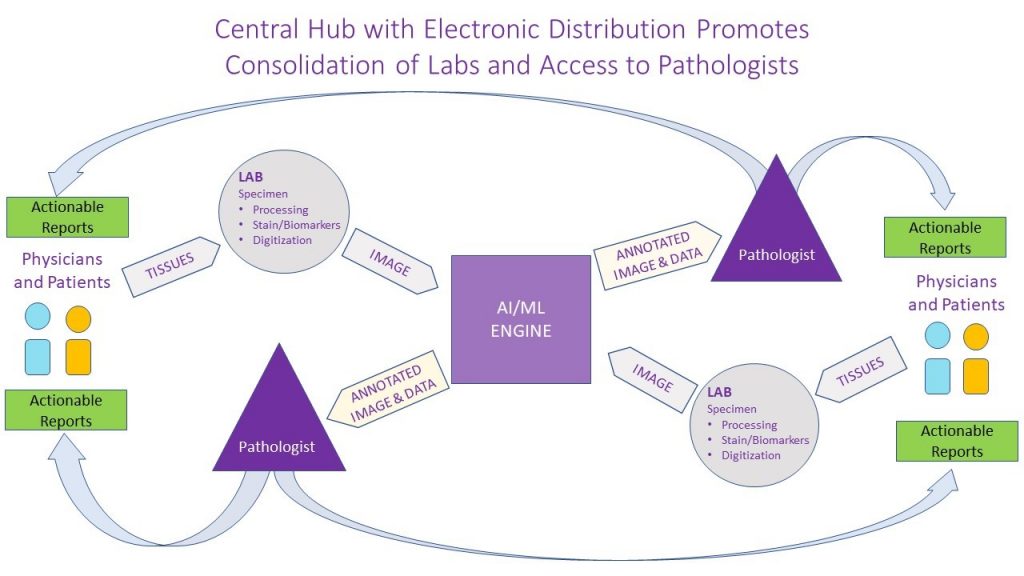28 October 2019
By Richard Lash MD, and Caroline Popper MD
For centuries, the basics of pathologic examination of human tissue under a microscope has essentially remained unchanged.
The excitement about Digital Pathology (creating digital images of the glass slides containing the thin stained slices of tissue) was centered around the two notions: 1) that patient’s biopsies could be shared without constraint of having a pathologist be physically collocated with the slide, and 2) the tissue could be interrogated with the assistance of Artificial Intelligence (AI).
The latter could range from prescreening slides to ensure nothing important is missed, to helping establish the correct diagnosis, to identifying prognostic information, to guiding optimal treatment choices.
So let’s do this, right?
Well, it turns out that it’s not as straightforward as it was for Digital Radiology.
First, digital radiologic images actually replaced film, significantly saving time and cost. Digital Pathology, however, still requires the creation of a glass slide, and only then can it be scanned, adding time and cost. Both glass and digital images need to be preserved.
Second, Digital Scanners are too slow, making it impractical for many labs to use them other than for ad hoc applications.
Third, there is apprehension by pathologists because they fear not being able to visualize detail as well as with glass (this attitude is evolving, though, with increasing openness over the last few years).
Finally, the AI software has to date been quite limited; however, as usage increases, there will be more demand and incentive for developers to invest.
What will enable the inevitable adoption?
The increased costs and time mentioned above must be overcome by other, more significant benefits if widespread adoption is to occur. Benefits are focused on 2 main areas: 1) Cost Savings (e.g., reduced slide shipping/recall, utilization of excess pathologist capacity, pathologist “acceleration” via AI assistance, etc.) and 2) Clinical Value (e.g., improved quality, prognostic and theragnostic information, etc.).

The tipping point, in our opinion, will occur when digital scanning hardware makes a quantum leap in speed, making investment by labs and pathologists more practical. The prospect of increased utilization in turn will stimulate more AI solutions, which have been improving. Data already suggest that a well-validated algorithm, especially used in combination with pathologist input, can perform better than a pathologist working alone in certain circumstances.
Market trends will also accelerate the tipping: an aging population with expected increases in biopsy/excision specimens, decreasing numbers of pathologists nationwide and globally (especially in rural areas), and the overall evolution of Pathology, like other specialties, from a generalist practice to a specialist one.




